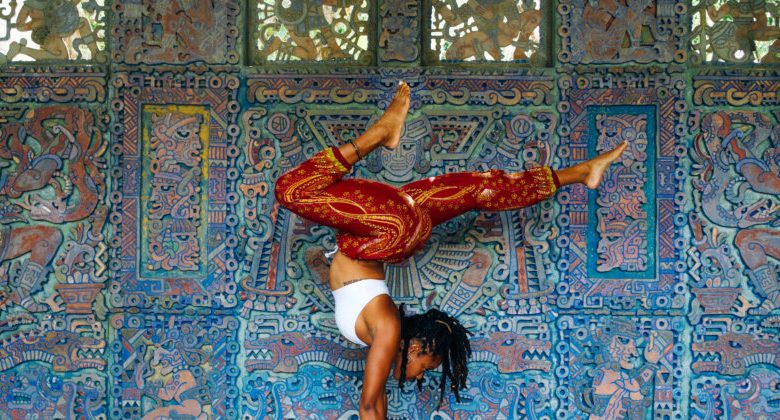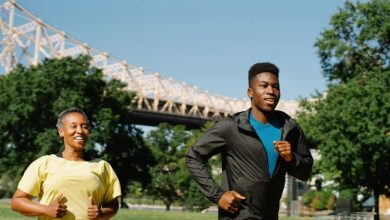Your Yoga Checklist for Beginners

Yoga has long been popular, but over the last few years, more and more people are turning to it to ease stress, improve fitness and generally enhance their wellbeing. However, when you see those wearing yoga pants and heading into gyms with their toned bodies and all the gear, it can feel a little daunting.
However, it’s well worth facing those fears as yoga can be truly transformative for people. In fact, such is the transformative nature of yoga, it’s used by professionals to aid a host of conditions, from going through cancer treatment to physio rehab to even addiction, with every rehab center encouraging it as a form of coping mechanism.
Whatever your reason for wanting to take up yoga, though, getting started is easier than you think, and all you need to do is consider the following…
Choose the Right Yoga Style
Firstly, you need to think about the right style of yoga for you. Different types of yoga suit different goals and preferences, and for beginners it’s worth considering the following:
- Hatha Yoga: This is a gentle yoga that’s all about the basics and introduces you to them. You’ll find simple yoga poses, as well as a range of breathing exercises that make it a great place to start.
- Vinyasa Yoga: A little more dynamic, this style links movement and breathing and is designed to build strength and improve flexibility.
- Yin Yoga: This is a slower paced yoga that involves holding poses for longer periods and is all about deep stretching and finding relaxation.
- Ashtanga Yoga: A more rigorous exercise that follows a set sequence of poses, which is ideal for those that prefer a challenge.
Invest in the Right Equipment
Getting the right gear to start yoga isn’t too difficult as it requires very little equipment. Really all you need is a mat, but there are other accessories that can aid your yoga experience too.
- Yoga Mat: A good quality yoga mat is vital. You should look for one that has plenty of cushioning to support your joints, as well as plenty of grip.
- Yoga Blocks: These are props that can be useful for beginners to help maintain balance and correct alignment, particularly in more challenging poses.
- Yoga Strap: Great for improving flexibility, a yoga strap allows you to deepen your stretches in a safer manner.
- Comfortable Clothing: Another essential, you want clothing that is stretchy and allows you to move freely. Ideally, you want clothing to be breathable too, while avoiding anything too loose that it could obstruct your practice.
- Water Bottle: Finally, get yourself a water bottle so you can stay hydrated during your sessions.
Create a Comfortable Space
If you’re looking to practice at home, then you want to create a quiet and comfortable space. Even going to a session, it’s worth finding a spot that:
- Is Quiet: Find a quiet spot where you won’t be disturbed. Turn off your phone and eliminate distractions where you can.
- Has Adequate Space: Ensure there’s enough room to complete your stretches, while ideally, you don’t want to feel closed in.
- Considers Ambience: Yoga studios will try and get the ambiance right, and the likes of soft lighting, pleasant scents, and calming music at home can help you enhance your practice.
Learn Basic Poses and Breathing Techniques
Before you dive into a yoga session, it could be a good idea to do a bit of research and understand what some of the basic poses and breathing techniques involve. Among the ones to check out are:
- Mountain Pose: A foundational standing pose that promotes good posture and grounding.
- Downward-Facing Dog: A key pose in many yoga practices that stretches the hamstrings and spine while strengthening the arms and shoulders.
- Child’s Pose: A resting pose that gently stretches the back and helps to calm the mind.
- Corpse Pose: Typically practiced at the end of a session, this pose encourages relaxation and integration of your practice.
- Pranayama: Learning to control your breath is a core component of yoga. Start with basic techniques like diaphragmatic breathing and alternate nostril breathing.
Start with Short, Consistent Practices
It’s important to start by perfecting the practice. Rather than pushing yourself to complete longer sessions and get through them, start with shorter ones that are sustainable and you can be consistent with them. Even just 10 to 20 minutes per day can make a difference to your flexibility, strength, and mental clarity, and you can increase your session times over time as you get more and more comfortable.
Listen to Your Body
Following on from that point, you need to listen to your body. Yoga isn’t about pushing yourself through walls and barriers. You’re not running a marathon. It’s about finding balance and harmony in your body and mind.
If a pose feels too challenging or uncomfortable, modify it with blocks and straps or take a break. Try again during your next session and you may see progress. Also, it’s worth noting that it’s fine to rest in Child’s Pose whenever you do need to take a few minutes.
Seek Guidance When Needed
Finally, as a beginner, the best way to learn is by reaching out and asking experts. If you’re attending a class, instructors can provide great guidance and help with your alignment, breathing techniques and modifications to allow you to practice safely and effectively.




